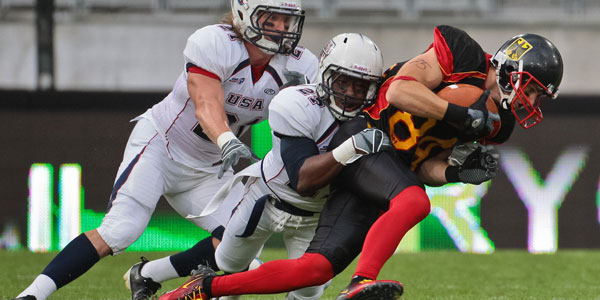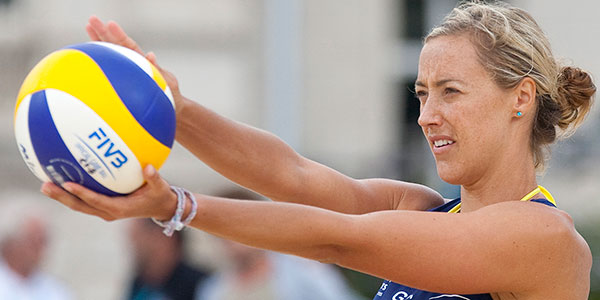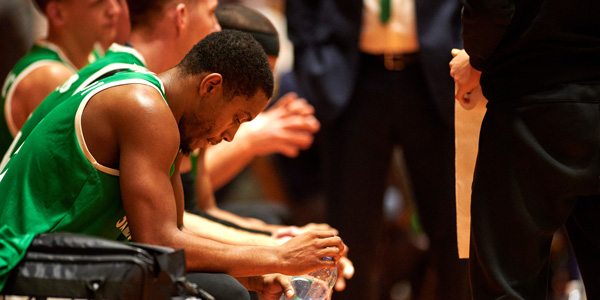JV's blog

How You Can Become the Best Athlete You Can Be
How do you become the best athlete you can be? Why do so many athletes fall well short of their potential?
When you understand the factors that interfere with improvement, you can apply mental strategies to build motivation and move your game forward.
How many times have you dreaded going to practice? You feel practice has become a punishment. Even games are no longer fun.
Many young athletes drop out of their sport at early ages. Many of those athletes feel too much pressure, feel not good enough, or aren’t seeing significant improvement in their game. No matter the reason, sport should be a positive experience for youth athletes.
Let’s look at what elite athletes do to maintain their motivation and strive to reach their potential.
Forward Sophia Smith plays for the United States Women’s National Team and the Portland Thorns FC of the National Women’s Soccer League. Smith was selected by Portland with the first overall pick of the 2020 NWSL College Draft and is highly committed to honing her craft.
Smith believes the key to athletic success is finding a healthy balance between constantly challenging yourself and enjoying the experience.
SMITH: “[Reaching my potential] is really hard balance and something that I have always [worked on], and I’m still trying to figure out to this day – how to balance it in a healthy way. I always want to push myself and to strive for more, and never be satisfied. And I think that’s great, and I think that’s what all the best players in the world have to do. That’s the mindset that they have to have. And then, at the same time, I think if I am forgetting to have fun, I’m not going to be playing at my best. I’ll be putting too much stress and pressure on myself to the point where it’s showing on the field. And that’s absolutely not what I want.”
Maintaining confidence, staying motivated, and uncovering your potential involves finding a healthy balance between striving to improve and enjoying the process.
5 Essential Ingredients to Maximize your Sporting Experience- Don’t compare yourself to other athletes – Comparison is the quickest way to lose confidence in your abilities and talent. Strive to be a better player than you were yesterday.
- Shoot for progress, not perfection – Trying to be perfect will cause you to give in (give less effort) or give up (quit your sport altogether).
- Enjoy the grind – Find reasons to challenge yourself each training session or practice. One small practice goal can motivate you to push yourself, even during monotonous training sessions.
- Be patient – Nothing happens overnight. Elite, Olympic, and professional athletes grind for years. That is the reason they become elite. Even though you don’t see immediate improvement, it does not mean you are not progressing.
- Have fun – When you have fun, you will persist longer and be more willing to make the sacrifices needed to be your best.
Success is not easy. However, it should not be a miserable experience either.
Tip for Maximizing Athletic Success
The recipe for success is quite simple: work hard, challenge yourself, find a balance between life inside and outside of sport, and have fun.
If you can accomplish these four tasks regularly, you will achieve more than you can imagine.
By

The Power of Visualization for Athletes
Do you use visualization or imagery with your training regimen? Most athletes do not visualize or might only visualize before important competitions.
Visualization is the process of mentally rehearsing a scene in your mind to learn skills or enhance performance and consistency.
Interestingly, an overwhelming number of Olympic athletes visualize daily and credit visualization as a significant contributor to their successes.
Why do some athletes avoid visualization when elite athletes take advantage of visualization to take their performance to the next level? Athletes who have doubts about visualization ask the following three questions:
1. Does visualization work? – Absolutely! Many athletes around the globe use visualization to learn new skills, deal with pain, improve their focus, manage competitive emotions, feel comfortable in new competitive environments, overcome adversity, maintain poise, and foster peak performance.
2. How does visualization work? – When you intentionally create images in your mind, you form muscle memory facilitating the replication of those images in practices or competitions. When you successfully visualize positive outcomes, you lessen the anxiety when performing those skills in physical competitions.
3. How do I start visualizing? – Start by getting relaxed with deep breathing or meditation. Visualization is most effective when you start with a relaxed mind and body. You may want to start by writing out a script to follow to avoid missing out on any details. You can record your own script as a guided imagery program.
Visualize only successful outcomes…
USA volleyball players Alix Klineman and April Ross won the gold medal in beach volleyball at the 2020 Tokyo Olympics.
Klineman Ross became only the second U.S. women’s duo in history to win an Olympic gold medal in beach volleyball.
When asked how she pumps up and prepares for a game, Klineman pointed to visualization as a significant component.
KLINEMAN: “I do some visualization, which has been really powerful. I visualize myself in my body, so instead of looking at myself from another perspective, I see myself on the court, going through different skills and doing them really well. It’s like this positive reinforcement of knowing what it feels like, looks like, and how to execute it at a really high level… There’s a really powerful connection between body and mind, which I think a lot of people don’t realize.”
Visualization or mental rehearsal is a powerful mental tool to raise the level of your game. When you use mental rehearsal with your physical training, you will improve consistency, you mental game, and take your game to a new level.
If Olympians use visualization to achieve greater results, you can also raise your game by adding visualization to your daily training schedule.
Visualization And Peak Performance
To improve your visualization skills, you must be patient with the process. Most athletes give up on visualization too quickly because they don’t see immediate results or find it challenging to create vivid images in their minds.
And remember that visualization is not always about visual images. You might be more feel-oriented and want to feel your performance instead. Most athletes use a combination of modalities to mentally rehearse their performance.
By Patrick Cohn

How do you respond to constructive criticism? Do you reject it outright or welcome it from coaches?
Why do some athletes reject corrections or constructive feedback from their coach?
Athletes fear receiving constructive criticism for several reasons:
- They feel they are negatively being judged.
- The criticism confirms some self-doubt they have about themselves.
- They have perfectionist standards.
- They fear they are letting down others.
- They are given feedback in an aggressive or disapproving tone.
Some athletes see the criticism as a list of everything they do wrong. In these instances, the feedback is dismissed or ignored. Other athletes view criticism as constructive or advice on how to improve their game.
Accepting and using feedback is a critical mental skill for athletes. When you develop this mental skill, feedback will not feel like an attack on your ability but like a suggestion on how to improve your performance.
However, not every coach or parent is skilled in how to provide feedback effectively. So finding the message in the criticism is up to you.
Here’s a practical example from the Boston Celtics. The Celtics had built an 18-point lead against the Golden State Warriors in the first half of Game 3 in the 2022 NBA Finals.
Boston built the lead by playing tough defense and controlling the ball on offense. The Celtics became reckless with the ball, committing foolish turnovers and allowing the Warriors to climb back into the game.
In the fourth quarter, Boston head coach Ime Udoka was fuming during a timeout. After the timeout, the Celtics collected themselves, regained their composure, and eventually won the game 116-100.
After the game, Boston guard Marcus Smart commented on how the team acted on the coach’s feedback and was not offended by the tone of the message.
SMART: “You want to know what you’re doing wrong so you can fix it. You can’t fix nothing if you don’t know what the problem is. So we definitely appreciate his honesty and his openness.”
Criticism can feel like an attack, but often there is a message that you can focus on and disregard the negative tone.
It is normal for your defense mechanism to kick in, but criticism can be helpful or, at least, the message within the criticism. Rather than throwing out the message due to the negative delivery and the person delivering the message, grab hold of the parts of the feedback that can help your game.
How to Use Constructive Criticism:
When you receive criticism, ask yourself three questions:
1. What is the message?
2. Does this message apply to me?
3. If yes, how can I use this feedback to improve my game?
And do this:
1. Communicate with the person giving you feedback. Clarify the message.
2. Challenge your defensiveness. Find out why are you bothered by receiving feedback?
3. Focus on the message itself, not how the message is delivered. How the message was given is not as important as the information.
4. Ask yourself if the feedback can help you and, if so, how you can apply it to your game.
By Peter Cohn
